Boston fern care – 3 expert tips you need to know
Though a good choice for beginners, these indoor plants need a few specific conditions to thrive
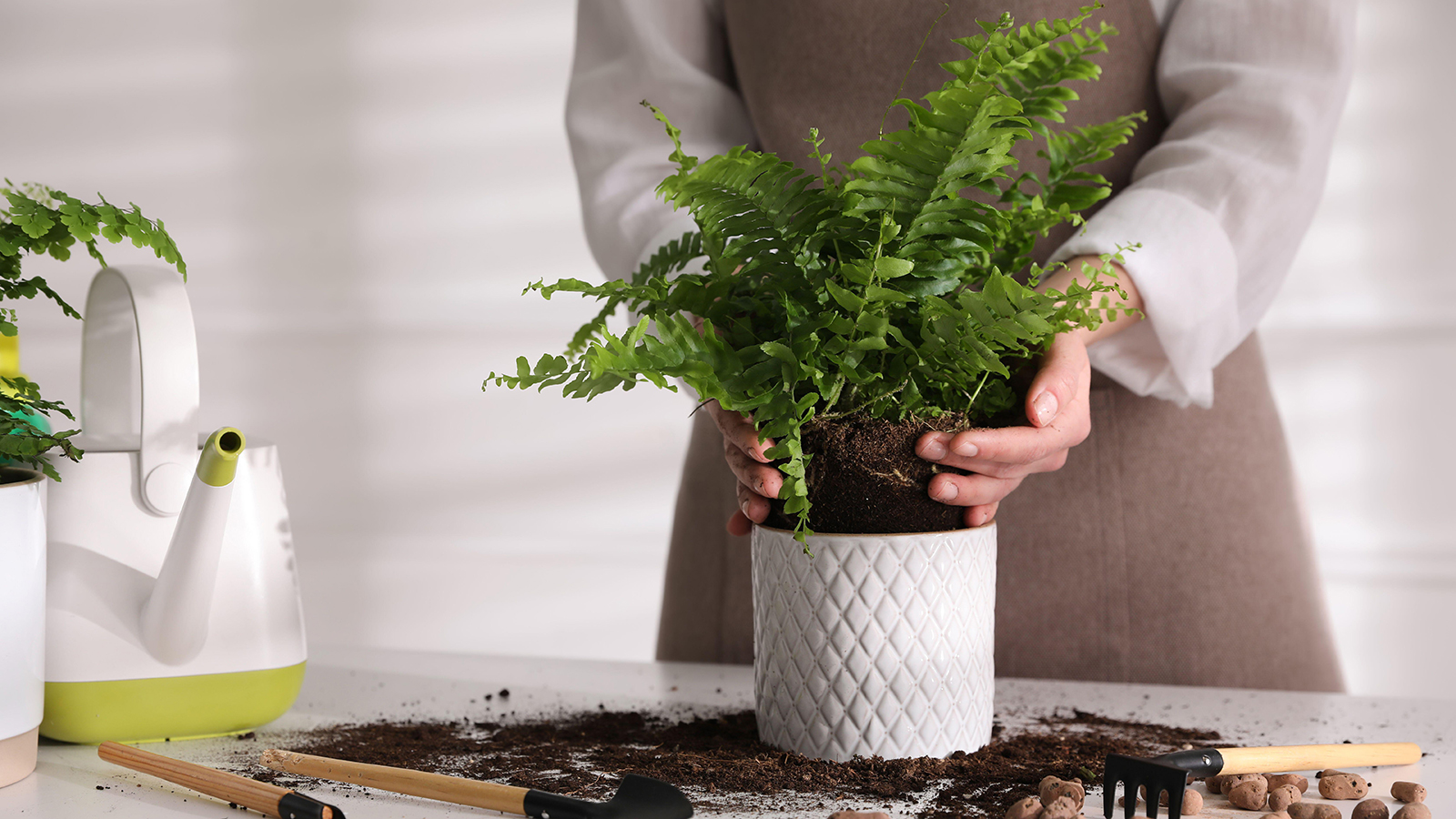

Boston fern care is easy when you know how. Also known as the sword fern, the Boston fern is an elegant houseplant that will create a lush look in your home, and with its fountain of bright green frilly foliage it makes one of the best indoor plants.
The arching leaves, known as fronds, can grow up to 3ft in length, given the right conditions, and make a beautiful feature when cascading from a hanging basket or displayed in a pot on a tall stand.
Boston ferns (Nephrolepis exaltata) hail from the forests of South and Central America, and consequently prefer a warm humid atmosphere that replicates their native habitat. However, while this fern comes from swampy areas, it is an epiphyte, which means it lives among the branches of trees, so it will not be happy sitting in soggy soil.
You may find the Boston fern listed under Nephrolepis exaltata ‘Bostoniensis’ which is a popular plain green variety. Or try the variegated form N. exaltata ‘Tiger Fern’, with its unusual yellow-streaked foliage, which is also one of the best indoor plants.
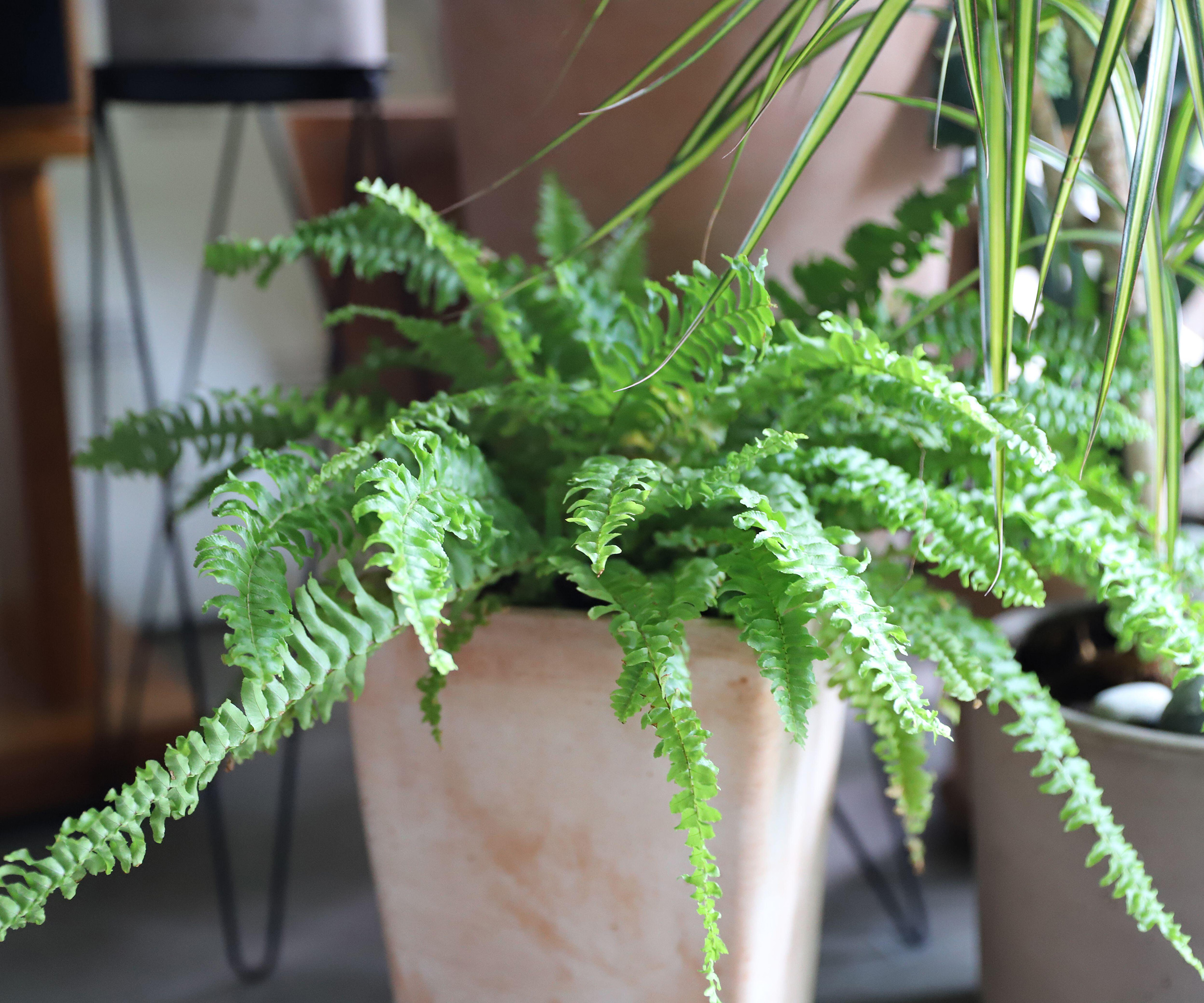
Display your fern on a tall stand or shelf to enjoy its cascading fountains of green foliage
3 essential Boston fern care tips
When it comes to Boston fern care, Tom Knight of Our House Plants says the plant is a good choice for beginners wanting to start their own indoor garden.
'It’s readily available, relatively cheap and offers a great way to enjoy lush green foliage at home,' he says.
1. Find the right light for your Boston fern
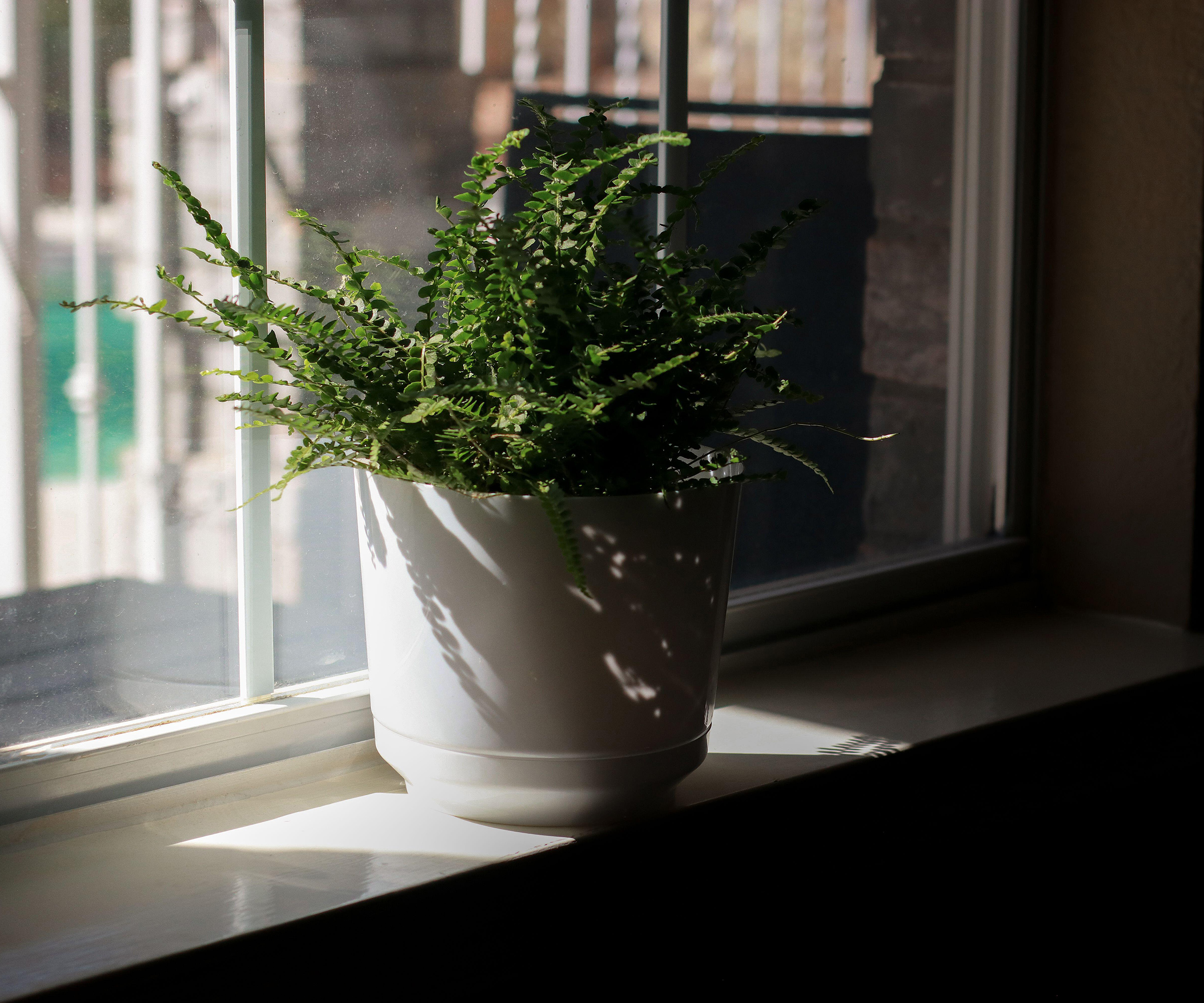
In a south-facing room, place your fern away from the window where the bright glare of the sun may scorch the foliage
Tom Knight says this fern likes a bright or slightly shaded position: 'The Boston fern is really versatile. You can grow it on a north- or east-facing windowsill or in a sunnier room, setting it back a little.
'Just make sure you avoid spots in very low light, or in harsh sunshine such as on a south-facing sill,' he says.
He also suggests growing them as a bathroom plant, if the light conditions are right, or as a steamy kitchen plant, where humidity levels are high.

A houseplant enthusiast that has run Ourhouseplants.com for the last 10 years. A popular website for anyone looking for success with indoor gardening or help getting their houseplants to thrive.
2. Water and feed as required
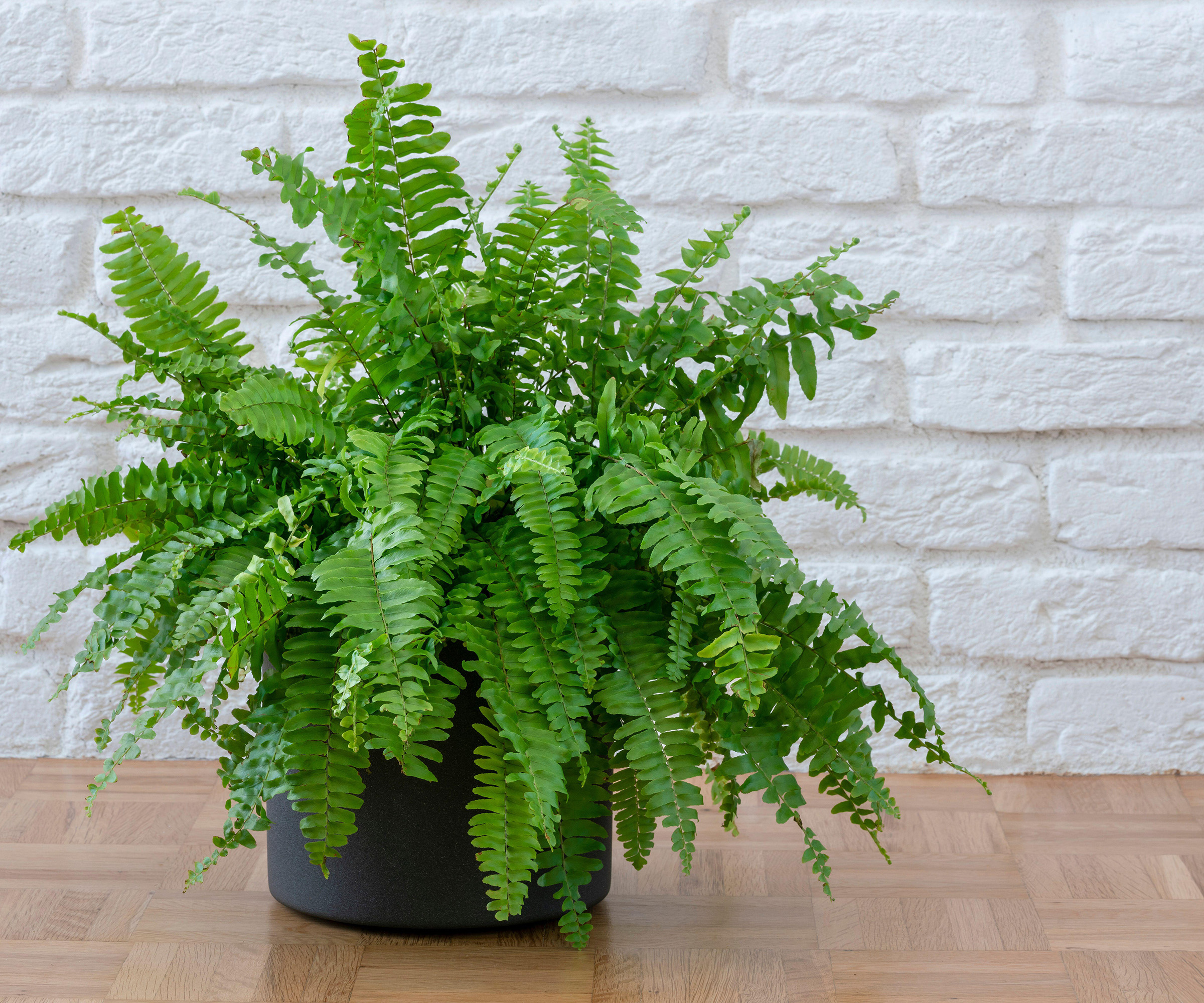
Bright green fronds with a lacy appearance will lend a cool leafy look to your home
Make sure your fern’s compost is consistently moist from spring to fall. But, as with many houseplants such as the yucca or Chinese money plant, guard against soggy, wet soil by planting it in a pot with drainage holes in the base.
Tom adds: 'Mine sits on an east-facing windowsill and I need to water it once a week, sometimes more in very warm weather.' Reduce watering in winter, applying moisture only when the top of the compost feels dry.
If you are displaying your Boston ferns in a living or dining room, or as bedroom plant, where humidity levels are low, also be prepared to mist the leaves a couple of times a week. Or stand the plant in its pot on a tray filled with pebbles and topped up with water. Like this oval black plastic humidity tray at Walmart.
Feed with a half-strength liquid fertilizer once a month from spring to early fall to keep the foliage green and lush.
3. Keep the atmosphere moist
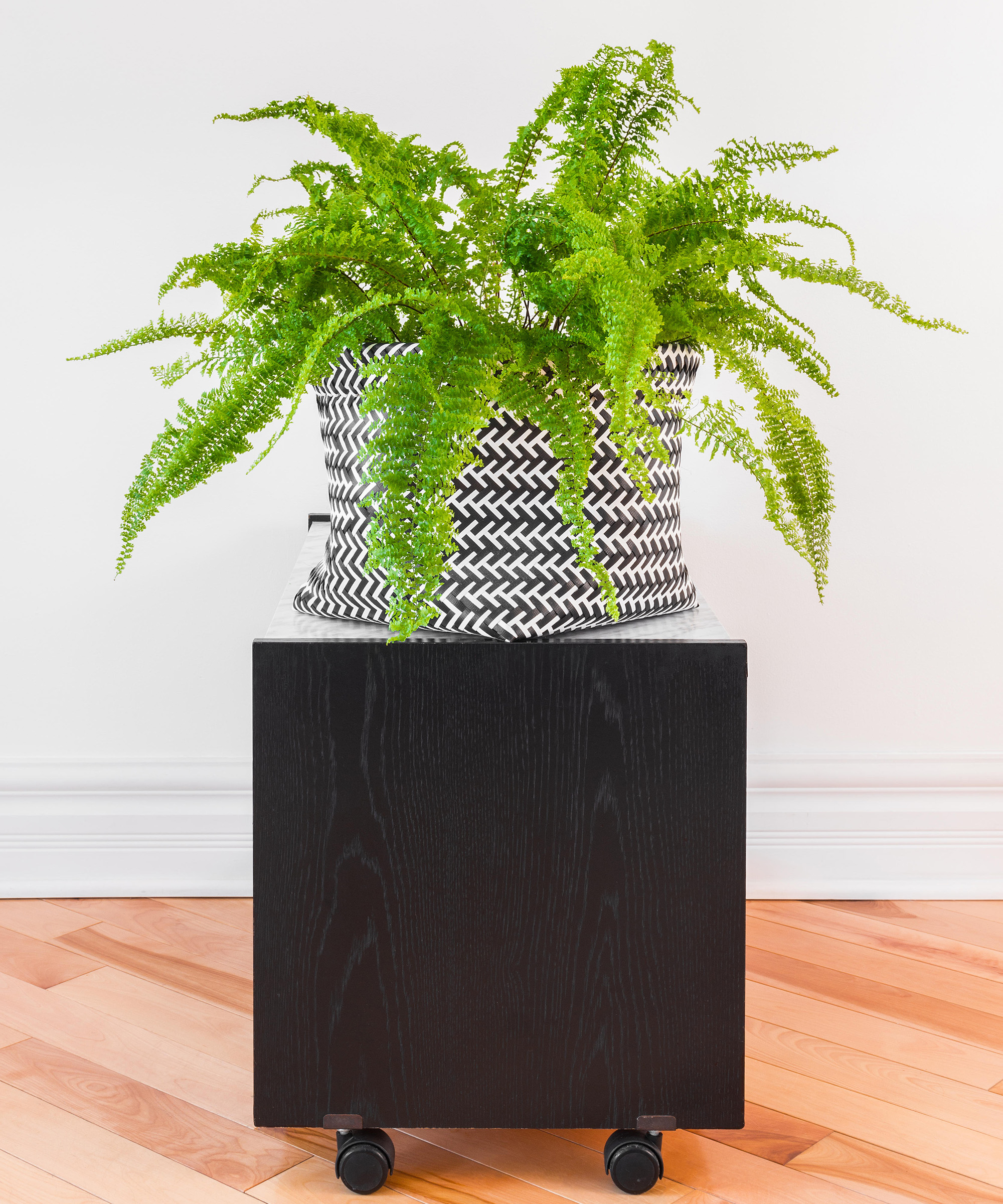
Don't let your compost become soggy
Like orchids, Boston ferns like humidity. The fronds may turn brown if the compost or atmosphere is too dry. Water well, making sure that you don’t overwater. As with pothos care, soggy compost can result in wilting or yellowing leaves and may cause the roots and fronds to rot.
Ideally, water your fern over a sink and leave to drain before replacing it in its waterproof container. If the atmosphere is dry, mist the leaves regularly.
If you find dark brown spots beneath the fronds of a Boston fern, do not panic. These are not a pest or disease but the ‘spores’ by which ferns reproduce.
FAQs
Can I put my Boston fern outside?
Boston fern is hardy enough to grow outdoors in USDA zones 9 - 11. Position it in partial shade, out of the midday sun. If you've been growing your Boston fern as an indoor plant then introduce it to the outdoors gradually.
Start by bringing it outdoors during the day and taking it back in at night for two weeks. It will survive in temperatures down to 50˚F. Make sure to also overwinter your Boston fern as temperatures start to drop.
Boston ferns need to be grown in the optimum light conditions, which mimic its native forest habitat. It dislikes damp soil but enjoys a humid atmosphere. The right care comes easy once you've found the best placement for it.
Sign up to the Homes & Gardens newsletter
Design expertise in your inbox – from inspiring decorating ideas and beautiful celebrity homes to practical gardening advice and shopping round-ups.

Zia Allaway is a garden book author, editor, and journalist, and writes for a range of gardening and women’s magazines, including Easy Gardens, Homes & Gardens and Livingetc, as well as The Guardian and The Daily Telegraph newspapers. She has also written books for the Royal Horticultural Society and Dorling Kindersley publishers, including Eco-Gardening, Compost, Low Maintenance, Practical House Plant Book, Practical Cactus & Succulent Book, Indoor Edible Garden, What Plant Where, and the Encyclopedia of Plants and Flowers.
-
 How to clean a patio – 6 different methods, and when you must use a chemical cleaning agent
How to clean a patio – 6 different methods, and when you must use a chemical cleaning agentFrom manual scrubbing, natural solutions or calling in the pros, industry experts reveal the benefits and considerations of each method
By Andy van Terheyden Published
-
 Kris Jenner's favorite air fryer, the Ninja Crispi, is the perfect small kitchen solution – it deserves a place on the most compact of countertops
Kris Jenner's favorite air fryer, the Ninja Crispi, is the perfect small kitchen solution – it deserves a place on the most compact of countertopsKris approves of this compact yet powerful air fryer, and so do our own kitchen appliance experts, praising it for its multifunctionality
By Hannah Ziegler Published